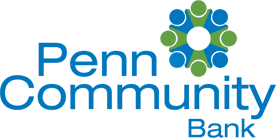Mission-Driven Marketing is Required to Survive in a Competitive Business Environment


In today’s business environment, customer decisions are complex and driven by dynamic, evolving factors. These decisions go beyond price and product selection. Customers – and increasingly employees – are frequently motivated by more emotional decisions. They’re choosing who to do business with based on what a brand says, does, and stands for. What’s more, they are expecting that businesses have purposes that align with their personal values.
For organizations as a whole and core business functions at every level – from Marketing and Human Resources to sales and service – understanding the power of corporate culture and a values-driven brand is more important than ever. By prioritizing authentic mission-driven branding and corporate initiatives, companies in any industry can promote better connections with customers and communities, achieve synchronization between cultural and bottom-line goals, and ensure they can effectively compete for market share and talent in an increasingly dynamic marketplace.
Mission-Based Marketing: From the Inside Out
Authenticity is at the core of an effective mission-based marketing strategy and developing and growing a successful corporate culture is at the foundation; without this base, even well-intentioned efforts will appear self-serving at best or unnatural and ineffective at worst.
Customers expect that what a brand says will be truthful, reliable, and respectful. According to the New York Times, 92% of Millennial consumers noted that authenticity has become a major factor in purchasing decisions and influences whether or not they would recommend a company to their friends or family.
At Penn Community Bank, developing and deepening this culture – the connection between our team members and our core values – has been at the forefront for years, including serving as a strategic objective in corporate planning. Not only did this focus pay dividends during the dark days of the COVID-19 pandemic, but it also positioned the institution to ride the wave of consumers’ increased attention to community and service in its wake.
From an annual Day of Service – closing offices and disbursing team members to volunteer at dozens of nonprofit locations across the region – to a commitment to charitable giving in the form of donating 5% of net income back into the communities we serve, programming and internal communications reinforce and highlight the value of this service-oriented culture. Moreover, they become a central component of our identity and reinforce the ideals we communicate throughout our branding and marketing efforts.
While the impact is sometimes unquantifiable, the value of this effort is backed by data. According to Deloitte, on average, when a company prioritizes its mission, they report 30% higher levels of innovation and 40% higher levels of workforce retention.
Mission-Based Marketing and Customers
And it’s not just those on the inside who notice.
For many companies, a strong approach to mission-based marketing can be the difference between building customer loyalty and turning them away. According to a report from Accenture, 66% of consumers were attracted to a brand because of its transparency and ability to deliver on its promises. This same survey discovered that nearly a quarter of customers would never do business with a company if its mission doesn’t align with their values.
Once established, businesses should include their focus on positively impacting society, including on a social, environmental, and economic level, in how they communicate with consumers the idea of corporate citizenship – from marketing and sales materials to charitable efforts. For a company to be able to incorporate mission-based marketing into its strategy and truly connect with target consumer audiences, it needs to be able to clearly and authentically communicate key focuses, like:
- Positive environmental impact: Prioritizing materials and methods with the lowest environmental impact; replenishing natural resources; opting for renewable energy; or taking steps to reduce pollution throughout company operations.
- Ethical and human rights: Treating all employees fairly regardless of identity; offering fair pay and benefits; or supporting diverse vendors.
- Commitment to philanthropy: Sponsoring fundraising events; providing employees time off to volunteer, funding educational programs; or donating to charities.
- Financial accountability: Being transparent about financial reporting; hiring talent from a diverse workforce; and training employees on key areas of responsibility.
Identifying and prioritizing these commitments can help brands develop a communications strategy that will inform customers of these values and showcase how they are being put into play.
Mission-Based Marketing’s Impact on the Bottom Line
However, the true power of mission-based marketing is the combination of culture and consumer desires to yield sales results.
In a recent survey of Penn Community Bank team members, 93% of respondents said they believe the institution’s commitment to community has a positive effect on brand awareness – with 67% strongly agreeing – and 85% have seen a positive effect on business development.
Beyond individual consumer relationships, consider the synergy mission-based marketing creates as it leverages broad networks of team members, community members, nonprofits, and businesses to build impactful connections.
A recent example at Penn Community Bank comes from our 2023 Day of Service where one of our partners was a local EMS squad. Upon brokering a relationship with the nonprofit, over a dozen bank team members were able to volunteer at the location – refurbishing training rooms, cleaning emergency apparatuses, and more – as well as present a check for $15,000 from the Penn Community Bank Foundation. Not only did the event and contribution support cultural expectations and giving goals, the partnership allowed for the training (and eventual hiring) of eight new EMT students in the community. Impressed by the partnership and authentic commitment to the community, the organization began the process of moving its entire banking relationship to our nearby Financial Center. From there, following our normal sales process, we were able to learn about the organization’s desire to make additional capital purchases in the near future, allowing one of our local lenders the opportunity to finance the purchase of a new, much-needed ambulance. All this while also reaping the earned media benefit of the partnership.
This isn’t exclusive to us. A BCG study found that companies that outperform their peers in “industry-relevant” environmental, social, and governance focus “boast higher valuation multiples and margins, all other factors being equal, than those with weaker performance in those areas.”
Ultimately, mission-based marketing can allow companies of any size to benefit on multiple fronts. Like Penn Community Bank, striving to convey authenticity, develop meaningful partnerships, and communicate honestly with customers and employees can ensure a positive impact on the communities they serve and the balance sheet.
___________________________
Bernard Tynes is Chief Marketing & Impact Officer of Penn Community Bank, the largest independent mutual bank in eastern Pennsylvania.
Connect With Your Community
Subscribe for stories that matter!
"*" indicates required fields






























